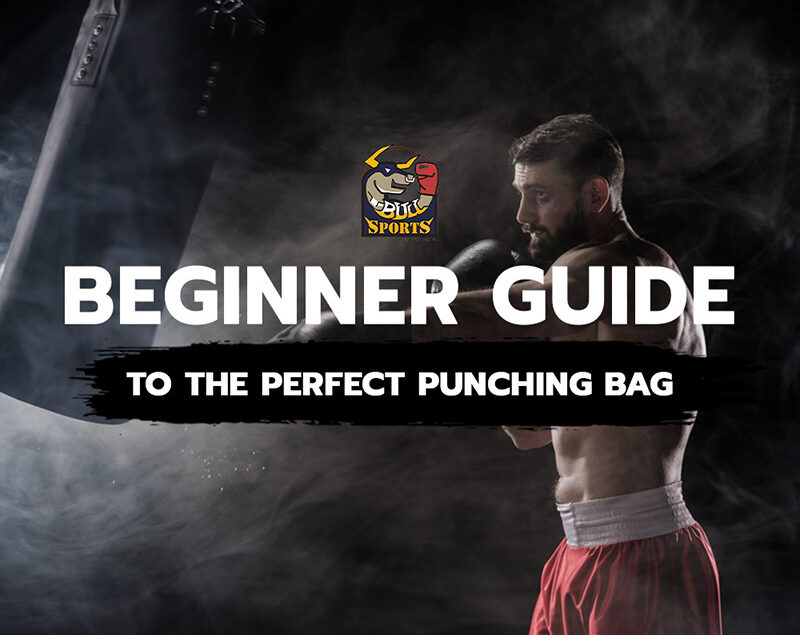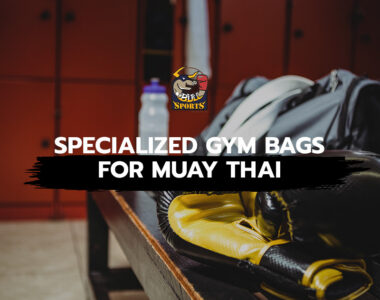
Nowadays, traveling to a boxing gym to practice Thai Boxing or working on a punching bag is unnecessary. You can install a punching bag at home for convenient and affordable workouts. Many people might be contemplating which type of punching bag is best for Thai Boxing training or suits their specific needs. Choosing the most suitable type can be a challenging task. This beginner’s guide aims to provide essential insights, helping newcomers select the perfect one to begin their training journey.
What is Punching Bag?
A punching bag serves as a fundamental training tool for practicing striking abilities. Designed to withstand powerful kicks, elbows, knees, and clinch work, the punching bag is crucial for Thai Boxing practitioners. It is utilized to develop power, precision, and conditioning, replicating the resistance and impact encountered in an actual fight. Training with a punching bag in Thai Boxing goes beyond just physical conditioning; it plays a crucial role in refining the technical aspects of the sport.
Types of Punching Bags
In general, when categorizing punching bags according to their usage patterns and installation methods, they can be broadly divided into two main types as follows:
1. Freestanding Punching Bag
The freestanding punching bag is versatile and suitable for various workouts. As the name suggests, this type of bag stands independently, typically with a base filled with water or sand to ensure stability. The installation doesn’t require hanging, making it a convenient home-use choice. The freestanding punching bag is often adjustable in height, accommodating different users and various training needs. While it may provide more sway and movement than a hanging bag, it offers a practical solution for those seeking a space-efficient punching bag option.
A freestanding punching bag is relatively high-priced but comes with comprehensive functionality. Additionally, it offers greater convenience compared to hanging punching bags. It’s easy to move and occupy minimal space. When considering a freestanding bag, choosing one with a stable base is crucial to prevent tipping during intense workouts.
2. Hanging Punching Bag
The hanging punching bag is a classic and widely used choice in combat sports and martial arts. Suspended from the ceiling or a wall mount, these bags offer a more dynamic training experience. Hanging bags provide a realistic feel, enabling users to practice various strikes, including punches, kicks, elbows, and knee strikes. However, it’s essential to ensure that your ceiling is sturdy enough to support the weight and movement of the bag.
Hanging punching bag is often more affordable, but they come with certain drawbacks. The challenge lies in selecting an appropriate installation location that requires a minimum hanging distance of 3 meters. If the installation area has a ceiling that is not sufficiently high, it may not be possible to set up. Moreover, hanging punching bag may deform due to the accumulation of fabric or sand inside, especially with extended use.
Punching Bag Buying Guide
When considering the purchase of a punching bag, a common question for many is whether to choose a freestanding punching bag or a hanging one. Both options come with their own set of advantages and disadvantages. Before making the decision, consider the following key factors:
1. Workspace
A minimum ceiling height of 3 meters is required to install a hanging punching bag to allow users to execute punches and kicks effectively within the optimal range. This requirement limits its suitability for areas with lower ceilings. Additionally, the ceiling must have sufficient strength to prevent potential hazards caused by the punching bag falling. Therefore, hanging punching bags are generally more practical in gyms with spacious layouts and high ceilings.
In contrast, the installation process for freestanding punching bag is more straightforward. Assembly and installation can be efficiently completed by following the provided manual in the desired training area, requiring only a tiny space. Typically not exceeding 2 meters in height, the freestanding punching bag, when falling, reaches a maximum of 2 meters on each side.
Another notable distinction between hanging and freestanding punching bags is their mobility. Freestanding punching bags can be moved effortlessly, making them well-suited for home use. The convenient installation, minimal space requirements, and easy mobility allow them to be placed anywhere within the house.
2. Quality of Materials
Materials used for making punching bags, whether canvas or leather, should adhere to standardized quality. They should feature meticulous cutting and stitching to prevent easy breakage and damage. Leather punching bags are undoubtedly more durable and resistant, although potentially pricier. Conversely, those made from canvas are generally more affordable, though they may not boast the same durability as leather.
Regarding the filling materials, there are various options. Foam filling provides a softer feel, making it more forgiving on the hands. In contrast, sand, sawdust, or cloth filling offers a denser, harder surface suitable for building strength and power.
Regardless of the chosen filling, it is crucial to compress them appropriately to ensure the punching bags exhibit good flexibility and provide a safe user experience.
3. Strong Wall Mount
Mounting accessories for hanging punching bags, like steel brackets, frames, chains, and bolts, must be very strong. If these accessories are not sturdy enough, there’s a risk that they might loosen over time, which can be unsafe for users. Therefore, when selecting a hanging punching bag, paying meticulous attention to the durability of all mounting accessories is essential.
4. Stable Foundation
For those considering buying freestanding punching bags, the primary consideration should be the base of the punching bag. The base must be made of a material with robust strength and an appropriately balanced weight. It should effectively anchor the punching bag, preventing it from moving easily upon impact.
The punching bag must withstand the force of kicks and punches while maintaining stability. Therefore, attention should be given to both the structure of the punching bag and the base, ensuring stability and durability to prevent potential breakage or damage in the future.
5. Pricing Considerations
As previously discussed, we explored the advantages and disadvantages of hanging and freestanding punching bags and the commonly used materials. It is crucial to carefully select the one that suits your needs best and establish your budget range before purchasing.
While investing in a high-quality punching bag is essential, it’s noteworthy that options are available at different price points to accommodate various budgets.
In summary, choosing the right punching bag is essential for developing strength and a well-rounded set of combat skills. It is a crucial step toward optimizing your training experience. By considering factors such as the type of bag, material, mounting options, and budget, you can make an informed decision that matches your goals and preferences. Remember, the perfect punching bag is not just a piece of equipment but an investment in your health and skill development. With this comprehensive beginner’s guide, you can choose the punching bag that best suits your needs, bringing an exciting and impactful dimension to your training routine.




1 Comment
Comments are closed.